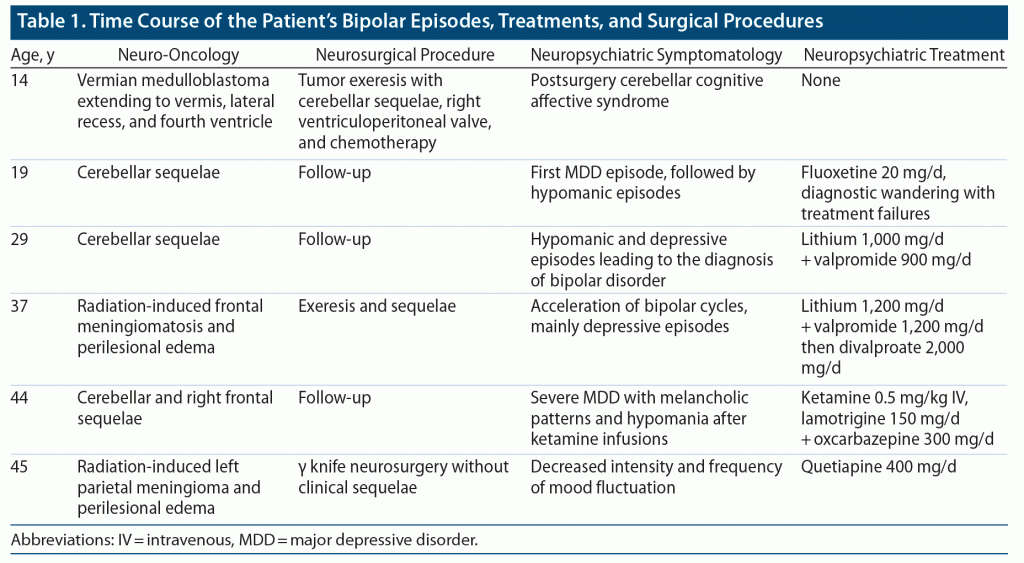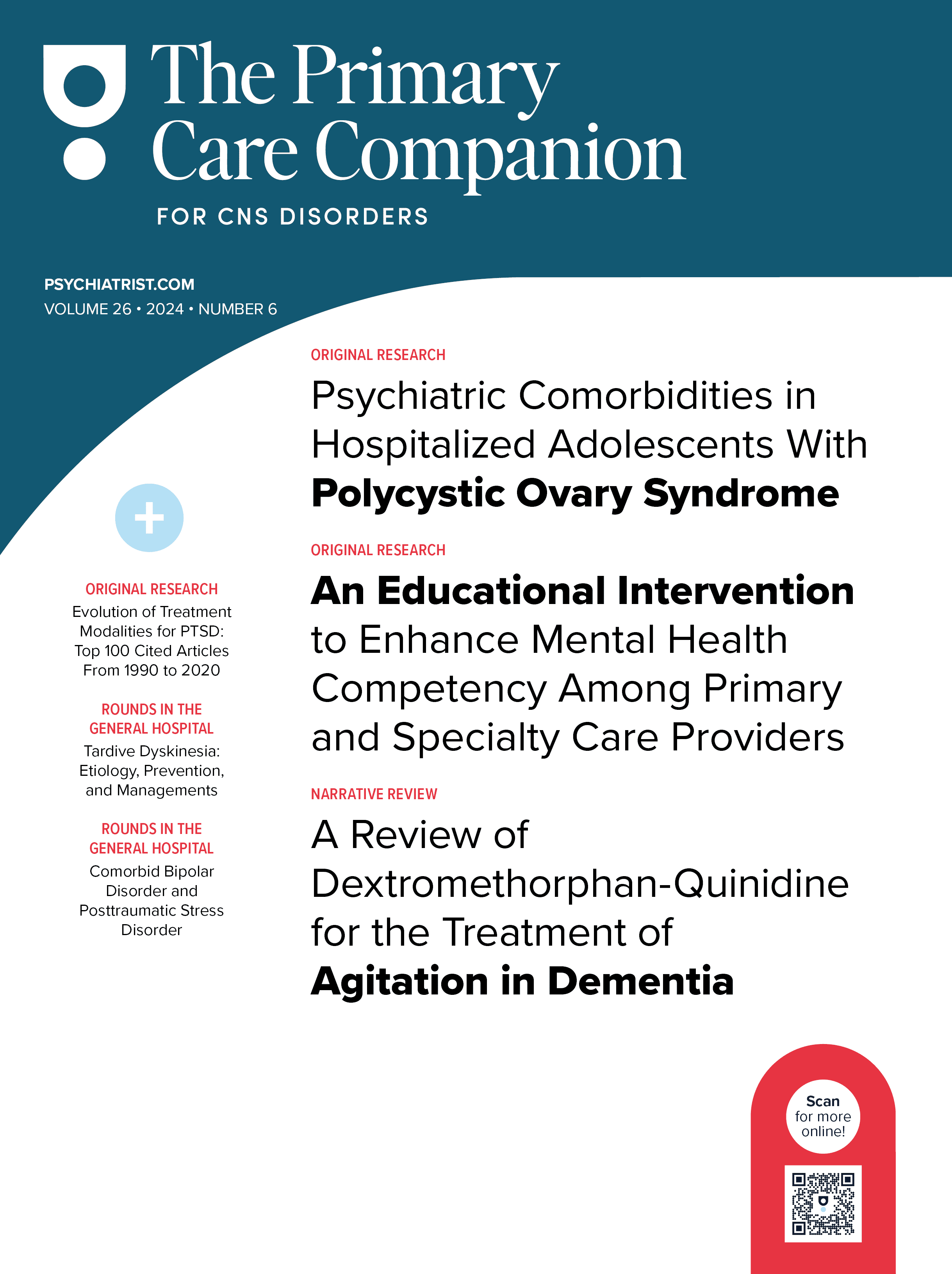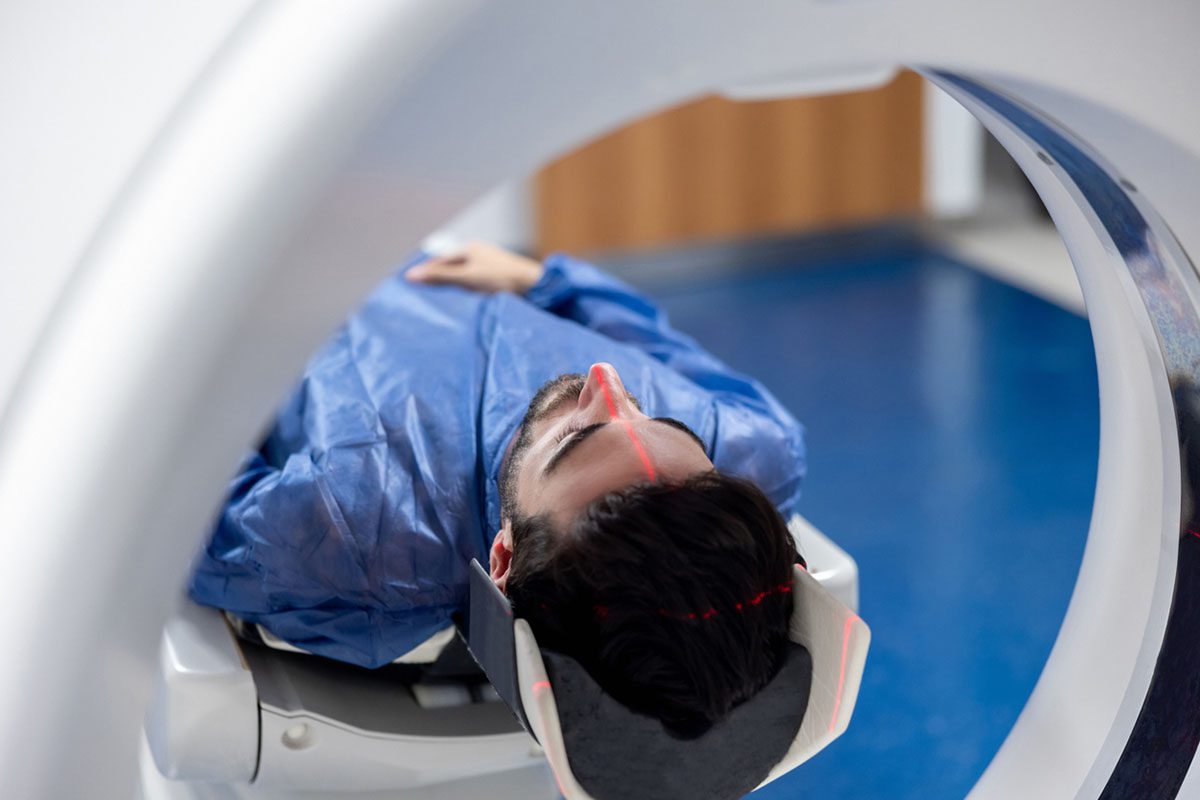
aParis Brain Institute—Institut du Cerveau (ICM), INSERM, CNRS, Sorbonne University, Paris, France
bDepartment of Psychiatry, Pitié-Salpêtrière Hospital, DMU Neuroscience, Sorbonne University, AP-HP, Paris, France
cDepartment of Philosophy, Sorbonne University, SND Research Unit, Paris, France
*Corresponding author: Hugo Bottemanne, MD, Paris Brain Institute-Institut du Cerveau (ICM), UMR 7225/UMRS 1127, Sorbonne University/CNRS/INSERM, Paris, France ([email protected]).
Prim Care Companion CNS Disord 2021;23(6):20cr02901
To cite: Bottemanne H, Tang J, Claret A. Rapid-cycling bipolar disorder and cerebellar cognitive affective syndrome associated with cerebellum and frontal neurosurgical lesions. Prim Care Companion CNS Disord. 2021;23(6):20cr02901.
To share: https://doi.org/10.4088/PCC.20cr02901
© Copyright 2021 Physicians Postgraduate Press, Inc.
Mood disorders are a major public health concern, associated with an increased human and financial cost.1 Many studies have shown an association between cerebellar lesions and mood changes.2,3 Paraneoplastic cerebellar degeneration or spinocerebellar ataxia may induce bipolar disorder. These mood disorders associated with neurologic lesions are often unresponsive to conventional thymoregulators.4 Although their neurologic basis remains unexplained, the higher frequency of association between bipolar spectrum symptoms and cerebellar lesions may suggest a specific involvement of cortico-cerebellar circuits in controlling mood, cognition, and behavior.3,5
Case Report
We report the case of a 45-year-old patient diagnosed with an ultra–rapid-cycling bipolar disorder that appeared after cerebellum and frontal neurosurgical lesions. The patient was initially monitored during childhood for a vermian medulloblastoma with a neuroblastic differentiation. The tumor invaded the cerebellar tonsils medial part and extended into the lateral recess and upper triangle of the fourth ventricle. A neurosurgical exeresis and a right ventriculoperitoneal valve surgery were conducted, leading to a cerebellar atrophy. Subsequently, the care was completed with 2 chemotherapy sessions combining Vincristine, Procarbazine, and Methotrexate and an external bypass in the right ventricular horn. Cerebellar cognitive affective syndrome began shortly after the intervention, initially characterized by an emotional lability, cognitive disabilities, and a static cerebellar syndrome.
The succession of depressive and hypomanic episodes in the following years led to the diagnosis of bipolar disorder at the age of 29 years old, and a bitherapy combining valpromide and lithium was introduced with a partial efficiency. At age 37 years, a radiation-induced right frontal convexity meningiomatosis associated with a perilesional edema was diagnosed. The surgical exeresis led to sequelae with a severe hypometabolism of the right frontal region objectified on 18F fluorodeoxyglucose positron emission tomography scan images. We noticed an acceleration of the bipolar cycles as the patient experienced 3 depressive and 2 hypomanic episodes in 2019, with short euthymic states of a few weeks only between 2 episodes (Table 1).
At age 44 years, the depressive episodes were aggravated by melancholic patterns. Thus, ketamine therapy was introduced, consisting of 6 sessions of 0.5 mg/kg with 48 hours between each session, combined with lamotrigine. One week after the final ketamine session, the patient switched to hypomanic symptoms and was stabilized with thymoregulatory therapy comprised of lamotrigine 150 mg/day and oxcarbazepine 300 mg/day. Finally, a left parietal meningioma was resected by γ knife neurosurgery, and the patient received reinforced neuropsychiatric monitoring and treatment with quetiapine 400 mg/day.
Discussion
Bipolar disorders have been associated with cerebellar lesions, dispelling the theory that the cerebellum is limited to controlling motor coordination and equilibrium.6,7 In 1998, Schmahmann and Sherman8 introduced the theory of cerebellar cognitive affective syndrome, a disorder characterized by the combination of emotion dysregulation, cognitive disturbance, and cerebellar syndrome and associated with bipolar disorder.5 These secondary mood disorders should be suspected in patients with neurologic deficits, atypical neurologic history, early onset of disorder after surgery, or late onset of disorders after the age of 40 years old.5
Current studies tend to suggest that the anterior and posterior lobe of the cerebellum are involved in motor ability control and management of cognitive and affective functions, respectively.7 Particular interest was also given to the cerebellar vermis, a region potentially involved in emotion-modulating processes through cerebellar-limbic connections.9 Following the major role of emotional regulation in mood disorders,10 the cerebellum could then constitute an emotional pacemaker for mood regulation.6
In our patient, the acceleration of bipolar cycles appeared after neurosurgical lesions of the right frontal region. Although the mechanism remains unknown, this case illustrates the potential implications of cerebellar-limbic and fronto-cortical regions in mood regulation. Nevertheless, these lesion-induced affective disorders remain a significant clinical challenge.
Published online: November 11, 2021.
Potential conflicts of interest: None.
Funding/support: None.
Patient consent: Informed consent was obtained from the patient to publish the case report, and information has been de-identified to protect anonymity.
References (10)

- Collins PY, Patel V, Joestl SS, et al; Scientific Advisory Board and the Executive Committee of the Grand Challenges on Global Mental Health. Grand challenges in global mental health. Nature. 2011;475(7354):27–30. PubMed CrossRef
- Wolf U, Rapoport MJ, Schweizer TA. Evaluating the affective component of the cerebellar cognitive affective syndrome. J Neuropsychiatry Clin Neurosci. 2009;21(3):245–253. PubMed CrossRef
- Delle Chiaie R, Minichino A, Salviati M, et al. Bipolar spectrum disorders in patients with cerebellar lesions: a comparison with Parkinson’s disease. J Nerv Ment Dis. 2015;203(9):725–729. PubMed CrossRef
- Slattery C, Agius M, Zaman R. Bipolar disorder associated with paraneoplastic cerebellar degeneration: a case report. Psychiatr Danub. 2010;22(suppl 1):S137–S138. PubMed
- Lauterbach EC, Harris JB, Bina WF 3rd. Mood and neurobehavioral correlates of cerebellar lesions. Cogn Behav Neurol. 2010;23(2):63–73. PubMed CrossRef
- Minichino A, Bersani FS, Trabucchi G, et al. The role of cerebellum in unipolar and bipolar depression: a review of the main neurobiological findings. Riv Psichiatr. 2014;49(3):124–131. PubMed
- Schmahmann JD. The cerebellum and cognition. Neurosci Lett. 2019;688:62–75. PubMed CrossRef
- Schmahmann JD, Sherman JC. The cerebellar cognitive affective syndrome. Brain. 1998;121(pt 4):561–579. PubMed CrossRef
- Kim D, Cho HB, Dager SR, et al. Posterior cerebellar vermal deficits in bipolar disorder. J Affect Disord. 2013;150(2):499–506. PubMed CrossRef
- Eldar E, Niv Y. Interaction between emotional state and learning underlies mood instability. Nat Commun. 2015;6(1):6149. PubMed CrossRef
Please sign in or purchase this PDF for $40.
Save
Cite





